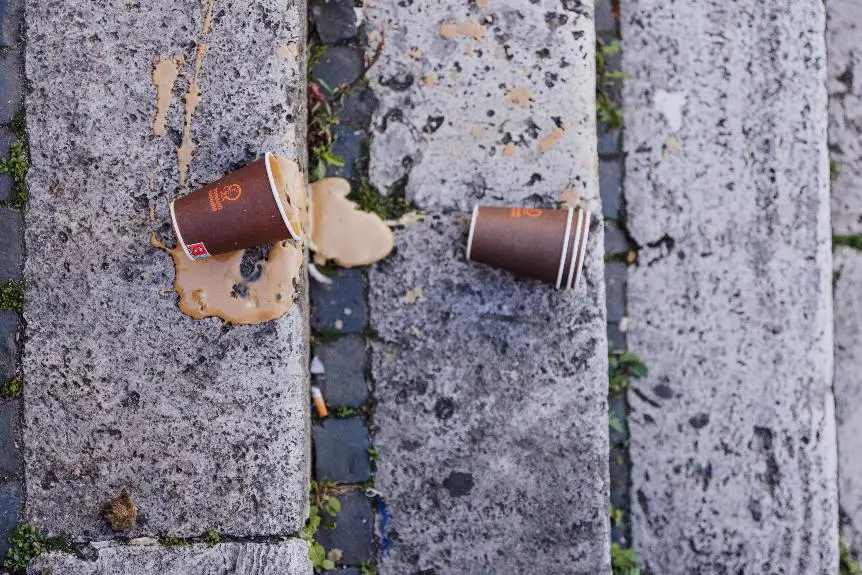You should be cautious when microwaving paper cups and plates because their materials can vary. Some paper products may have metal elements or plastic coatings that are not microwave-safe. These materials can leach chemicals at high temperatures or even cause a fire.
Also, the glues in paper cups might not be safe for microwaving. Always check the manufacturer's instructions or look for a microwave-safe label before microwaving paper items.
Understanding Microwave Safety
Microwave safety requires distinguishing between microwave-safe and unsafe paper products. Not all paper products are suitable for microwave use. Microwaving thin paper cups, for example, can be dangerous as they may deform or collapse, leading to potential burns or spills.
If the glue in these cups melts from microwave heat, it could release harmful chemicals into the drink. Therefore, only microwave paper cups that are labeled as microwave-safe.
Similarly, caution is necessary with paper plates. Only use those with a microwave-safe label to avoid problems. Some paper plates have metallic inks or coatings that are unsafe for microwaves. These can cause sparks or leach chemicals into food, posing health risks and possibly damaging the microwave.
It is essential to follow microwave safety precautions strictly. Using inappropriate paper products in the microwave can cause accidents, ranging from minor issues to severe injuries or damage to the appliance. Always check for microwave-safe labels and avoid using printed or glossy paper products in the microwave.
Composition of Paper Products
The composition of paper products is important for microwave safety. Paper cups and plates are often coated to prevent liquid absorption.
Paper cups may have a wax or plastic lining which can melt in a microwave, releasing chemicals and fumes, and compromising the cup's structure.
Paper plates might also have a plastic coating that can melt or warp when microwaved. The USDA states that most paper plates are microwave-safe, but the safest are plain, uncoated white plates.
These do not have hazardous coatings and are less likely to be a safety risk when microwaved.
Risks of Microwaving Paper
Microwaving paper products can lead to fires, release of harmful substances, and food contamination if they're not microwave-safe. Paper plates and cups are convenient but not all can withstand microwave heat.
Paper items can catch fire in the microwave, especially if they contain metal pieces or are heated too long. Non-microwave safe paper can also emit chemicals when heated, potentially contaminating food.
To avoid these risks, use only microwave-safe paper products. These can handle the heat without breaking down or releasing harmful substances. Look for the microwave-safe label and don't use paper with metallic ink or glossy finishes unless they're certified for microwave use.
Following these steps can reduce the dangers of microwaving paper.
Safe Microwaving Practices
Safe microwaving practices involve using products labeled as microwave-safe. Paper cups and plates should be clearly marked as such to avoid warping, melting, or the release of harmful substances. It is important to confirm that each paper product is suitable for microwave use.
When microwaving paper items, heat exposure should be limited. Generally, do not microwave for more than two minutes on a medium power setting to prevent overheating and fire hazards. Transfer contents from thin or flimsy paper cups to a microwave-safe container if necessary.
For increased safety, use alternatives like glass, ceramic, silicone, or heat-resistant plastic containers. These are durable and less likely to cause hazards when heated.
Alternatives to Paper Containers
Consider using microwave-safe alternatives like glassware, ceramic, silicone, or stainless steel for reheating food. These materials can handle high temperatures without contaminating food. Glassware is non-reactive and won't absorb colors or odors, preserving food flavor.
Ceramic is also microwave-safe, but check for metal decorations before use to avoid fire risks. If metal is present, transfer food to a safe container.
Silicone is flexible, non-stick, and can withstand temperature changes from freezer to microwave. Ensure the silicone is labeled microwave-safe before use.
Stainless steel is robust and good for storage but not for microwaving, as it can damage the appliance. Transfer food to a safe dish for heating, and cover with a microwave-safe lid or paper towel instead of aluminum foil to avoid splatters.
Choosing appropriate containers ensures meal safety and microwave longevity.
Final Safety Recommendations
To ensure safety, use paper cups and plates that are microwave-safe according to the manufacturer's instructions. These products are labeled as suitable for microwaves and can handle high temperatures without releasing harmful substances.
Microwave-safe paper cups usually have a special coating to prevent the paper from absorbing liquids and to help retain heat, reducing burn risks. Not all paper products have this coating, and using them in a microwave can cause fires, chemical release, or food damage.
Follow the instructions when microwaving paper items, which often means heating for no more than two minutes on a medium setting. Overheating can cause the paper to leak, warp, or catch fire.
For extra safety, transfer food to glass or ceramic containers that are microwave-safe. This ensures food and equipment safety and helps maintain food quality and flavor.




